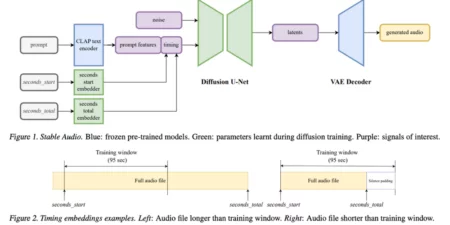An acoustic guitar is one of the most famous musical instruments for a guitarist. A musician feels incomplete without having to excel in how to play guitar. For this, he must know about the parts of an acoustic guitar. Guitars are trendy and admired by both adults and teenagers.
People feel fascinated by the person who excels at playing the guitar. But before playing, one should be able to learn and understand different types of guitars. A guitar works by plucking its strings to create a vibration that resonates through the guitar.
The main parts of an acoustic guitar include the neck, fretboard, saddle, headstock, frets, strings, bridge, and nut. There are several other parts of an acoustic guitar. Stay tuned to the article to research different acoustic guitar parts thoroughly.
A jazz improvisation, a classical concerto, or a punk rock anthem can all feature the guitar. The acoustic guitar, an older relative of the electric guitar, offers the most variety, even if the electric guitar is suitable for many genres.
What is An Acoustic Guitar?
An acoustic guitar typically has 6 strings. Some acoustic guitars with 12 strings allow the previous 6 strings to double the identical sound and make it look more affluent and chant. An acoustic guitar player can easily play it with his fingers or a prick. The genre of the music decides what type of guitar is required, and some players also have their choices when it comes to playing guitar.
There are a few parts of an acoustic guitar for beginners: neck, fingerboard, frets, position markers, nut, headstock, capstan, and tuners. Beginners can learn how to play an acoustic guitar with these minimum parts to make it possible for them to understand the basics.

A perfect acoustic guitar has a perfect volume, tone, and comfort; all this comes when the player knows what he is playing. Parts of an acoustic guitar diagram are visible in this diagram.
Types Of An Acoustic Guitar
The different kinds of acoustic guitars available have an impact on both how they sound and how they appear. The first thing a person typically observes and is drawn to when buying an acoustic guitar or any guitar is its aesthetic appeal. Following are the types of acoustic guitars:
- Parlor
- Dreadnought
- Jumbo
- Classical
- Auditorium
- Nylon string guitar
- Flamenco guitars
15 Parts of An Acoustic Guitar and Their Functions
Parts of an acoustic guitar are pretty similar to the electric guitar. Explanation of parts of a guitar and their functions in detail;

1) Body
The body of a soundboard consists of the top, back, sides, and soundboard of an acoustic guitar. The top tone woods are particularly significant because they produce sound due to the vibration in the soundboard; however, the back and sides also affect it.
The upper, waist, and lower bout make up the body from top to bottom. The lower bout is more significant than the upper one. Guitar bodies are available in the market in multiple sizes and shapes, including scooped indentations and cutaways.
2) Nut
The acoustic guitar nut is a thin piece, given the guitar support’s neck. A nut is a crucial part of the guitar, made up of some synthetic material or other materials, including brass, ivory, and ebony. The material of the nut is essential to hold the string properly. One of its other uses is to set the height of the guitar from the fingers.
3) Saddle
An acoustic guitar saddle consists of plastic or a piece of bone attached to the guitar’s bridge, allowing it to raise the strings to the desired height while transmitting vibration to the soundboard through the bridge.
The distance between your strings and the fingerboard can be raised or lowered depending on the saddle’s height. This approach is used instead of measuring the scale length because the saddle is already slightly inclined towards the bridge to help intonation.
4) Bridge
Internal parts of an acoustic guitar contain a bridge that sustains the strings and conveys the strings’ vibration to the soundboard. These strings have a shallow sound as they only allow little air to pass through them during vibration.
Since a bridge works for stringed instruments, the strings’ vibration should transfer to a bigger, resonant surface. For acoustic guitars, bridges are often composed of wood. However, they can also build numerous sections and other materials, such as plastic or bone. The bridge is bound to the top of steel-string guitars and classical guitars.
5) Strings
Acoustic guitar strings are quite different than electric guitars. The acoustic guitar consists of guitars with metal strings; other than acoustic guitars, classical guitar strings comprises nylon strings. The strings’ thickness and structure are the main reasons that make a big difference in sound.
The type of sound you require will decide what type of strings will create that sound. An acoustic guitar consists of 6 strings. 1 and 2 are the plain strings, also called unwound strings. From 3 to string 6 are the wound string with metal. When you are playing the guitar, string 6 is the finest.
6) Chords
There are 6 different chords on an acoustic guitar; those chords include;
- Chord A minor
- Chord G
- Chord B minor
- Chord C
- Chord D minor
All these parts of the guitar chords have different tones and sounds. There are other chords as well. But if you can learn these 6, you can quickly learn the other. Professional players or music composers use other chords.
There are two types of chords major and minor chords. Major chords are easy to play as they are the most basic chords. They are usually the chords to start with, and you can mix up your fingers and make them free to play. A C, D, E, and G major chords exist.
Minor chords are tricky, but if you can play all the major chords, minor chords will become easy to play. It is a big step to mastering the guitar if we discuss barre chords. B minor chord is a safe choice if you want to move toward mastering guitar skills. Minor guitar chords include B minor, A minor, C minor, D minor, and G minor.
7) Fingerboard or Fretboard
The fingerboard or fretboard, laminated to the front of the neck, is an essential element to ponder when buying a guitar since it influences comfort, playing style, and tone. Commonly used woods include ebony, rosewood, and maple, though artificial materials like Richlite are also available.
8) Frets
On the fingerboard, frets are raised guitar parts along the guitar’s whole neck. These frets consist of metals. They also contain different intervals making gaps in the guitar. These frets represent the semitone of the octave. A fret makes the notes more accessible to make than the non-fretted guitar. The fret notes make the string shorter and easy to play and produce a refined sound.
9) Position Markers
Along the length of the guitar, there are specific position markets that may be dots or custom marks on the fretboard visible to the player. They help the player play, usually used by beginners.
These markers are visible on the 3rd, 5th, 7th, 9th, 12th, and 15th frets and the twelfth-octave fret. If we talk about another classical guitars, such as electric guitars, they do not have these position markets.
10) Neck
The main body of the guitar projects a neck. This neck is the central area of the whole guitar as it contains all the frets, fretboard, strings, headstock, and truss rod. These necks are of different shapes called V shapes or C shapes.
If the neck is rigid, we can say that the guitar is of good quality. This neck can be bent slightly by the players; by bending the neck, the pitch of the sound can be changed and adjusted according to your desired tone.
11) Headstock
A headstock is at the top of the neck and is called the peghead of the acoustic guitar. It is the topmost part of an acoustic guitar. Tuning of a guitar takes place with the headstock because it holds the tuning pegs. This headstock can be angled or straight. The maker of the guitar or model decides the shape of the headstock.
12) Tuners
Parts of guitar tuners include tuners, tuning keys, tuning pegs, and tuning heads. These machine heads can rotate the capstan of the guitar. They help in adjusting the tension in the strings. Too loose strings can make the sound lousy, and too tight strings can increase the pitch to a large extent.
There are two ways of tuning, worm gear or pinion gear. We use worm gears on the classical guitar or a nylon guitar, but the acoustic guitar uses a pinion guitar. The acoustic guitar uses open-gear tuners too.
13) Soundhole
Soundhole helps in projecting sound from a guitar. This sound hole is not the only side from where the sound comes. But it is one of them. But a sound hole indeed allows the air to vibrate through it and create respective sounds.
These sound holes are present in the middle of the guitar body. Different guitar manufacturing companies are now manufacturing guitars with different designs that can change the position of certain parts.
14) Rosette
A serene decoration pattern surrounds the sound hole called the rosette. It is in a pattern that enhances the features of a guitar. It is round in shape or style with a flower or rose, as called in French. Different designs and patterns of rosette range from simple to modern design. Different brands make their guitar look different with the help of changing patterns with their rosette.
15) Bridge Pins
Most acoustic guitars use bridge pins to position the strings. Acoustic guitar bridge consist of bone, wood, or any other synthetic material. This material affects the guitar’s tone, which makes the sound more bass or treble. These guitars use these bridge pins rather than classical guitars.
Acoustic Guitar Vs Electric Guitar
People used the electric guitar in the older times. The parts of the guitar electric consist of a more petite body and thinner necks than the acoustic guitar. The acoustic guitar tends to have a heavier body and a thick neck that allows it to support the tension caused by the burden of the strings.
An electric guitar is more accessible to play than an acoustic guitar. A significant difference is that an acoustic guitar works by vibrating, and an electric guitar works with electricity. You have to have an electric connection with you all the time to make the electric guitar work. An electric guitar’s parts are almost similar to that of an acoustic guitar.
Acoustic Guitar Vs Acoustic Bass Guitar
The acoustic bass guitar is a bass instrument that is in the shape of a guitar. It has a hollow wooden infrastructure, but in shape, it is similar to the acoustic guitar. It also resembles the classical and conventional electrical and double bass guitar. A bass guitar has 4 strings, including E, D, A, and G. Their pitches are similar to the acoustic guitar.
Parts of an acoustic bass guitar
- Headstock
- Nut
- The bass neck
- Bass fretboard, fret, and inlays.
- Bass body
- Truss rod
- Pickups
- Bridge
- Bass strings
Assembling the acoustic guitar is not much challenging when you know what each part does and how it fits. You may need to use complex tools and perfect the skill of adjusting the parts to their place. However, building a high-quality acoustic guitar may need a higher skill level and mastering the art of fine-tuning each part.
There are several tools that you may need when building an acoustic guitar. These tools are somewhat complex for beginners, but you can use them without issues once you get familiar with them. These tools include a band saw, drill press, sharp chisels, flatbed sander, hand plane, laminate router, and many more.
Understanding how an acoustic guitar saddle goes in may take time to figure out when you are a beginner. The best way to deal with the saddle is to pass it on the guitar’s bridge while carefully running the strings through the saddle slots on the bridge.
Run a string through the guitar’s headstock and ensure to tie a knot. On the other side, run it through the keyhole on the strap front. It’s basic, and then you can attach the back-to-back button on the guitar. It is easier to attach the string if it’s long and fits through the headstock.
Acoustic guitars are a great innovation in the world of music. They have simple exteriors, and different guitars have their purpose, variations, and adaptability. Exploring different guitar parts is quite interesting for people who love playing guitar or beginners thinking about buying one. The article above is a great information package for many people. The guitar’s material plays an essential role in the pitch and quality of the music emerging from it. When you are deciding on buying a guitar, make sure to do thorough research on the multiple features of that guitar. There are plenty of music stores available around you. Different artists play multiple styles with the use of an acoustic guitar.
Final Thoughts





